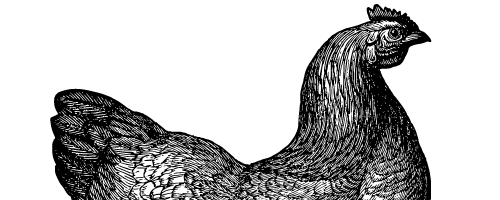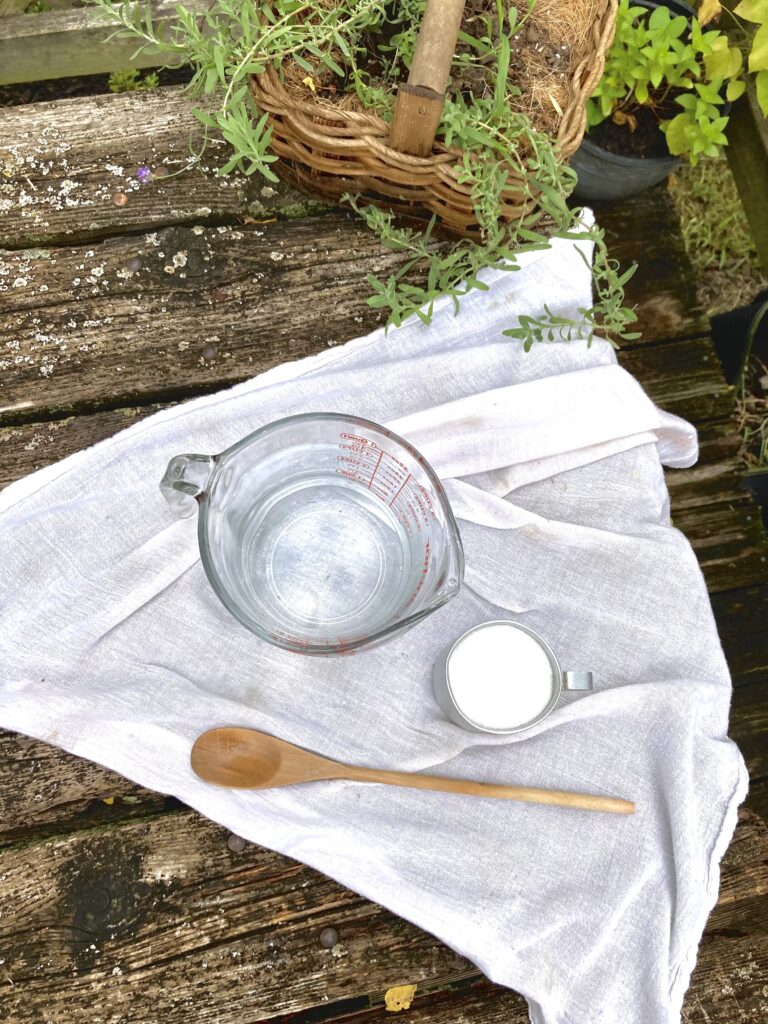How to Identify Golden Chanterelle Mushrooms
Consider yourself lucky if you live in an area that chanterelle mushrooms can be found. This sought after mushroom is delicious tasting and very nutritious, but can only be found in the wild. They are nearly impossible to cultivate. Because of this, they can be priced at $20 to $40 a pound. Follow along as I explain how beneficial these mushrooms can be to your health and show you how to differentiate them from their nasty look-alike.
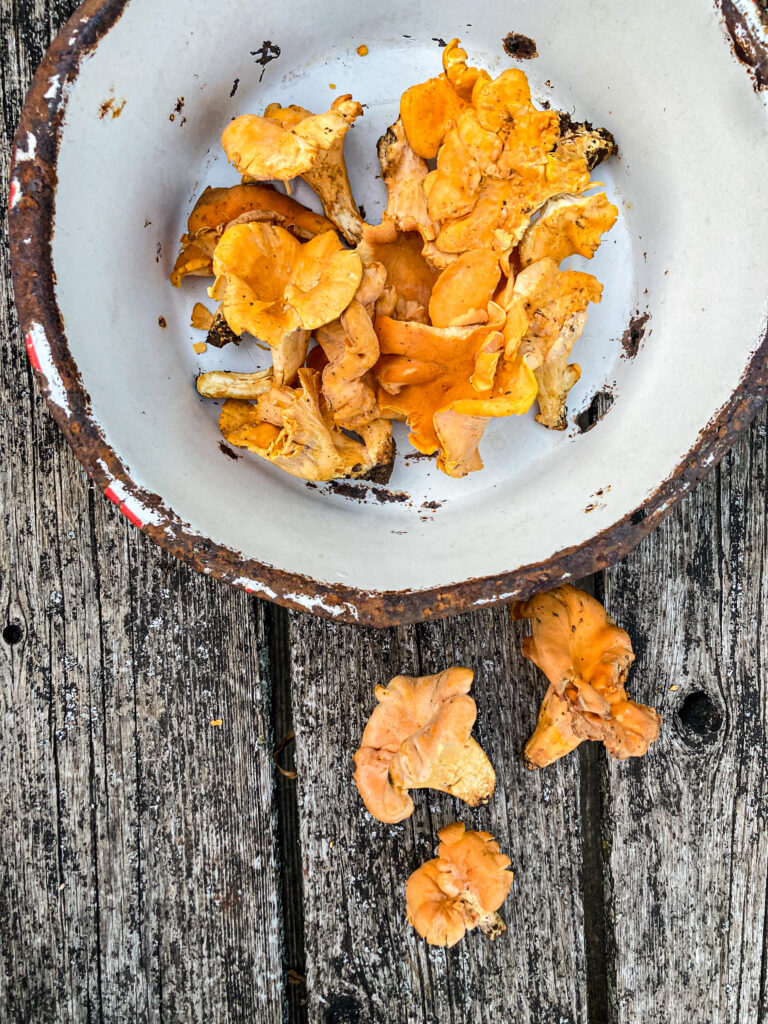
Chanterelle Mushrooms are a Superfood
Chanterelle mushrooms are rich in all sorts of vitamins that nourish your body. They are packed with protein, which makes them a great addition to any meal, whether cooked or raw. They’re a prebiotic making them gut healthy. Chanterelles are good for reducing inflammation, and they will lower your risk of cancer. This is because compounds in the mushroom protect your cells from damage and actually trigger your immune system to produce more cells.
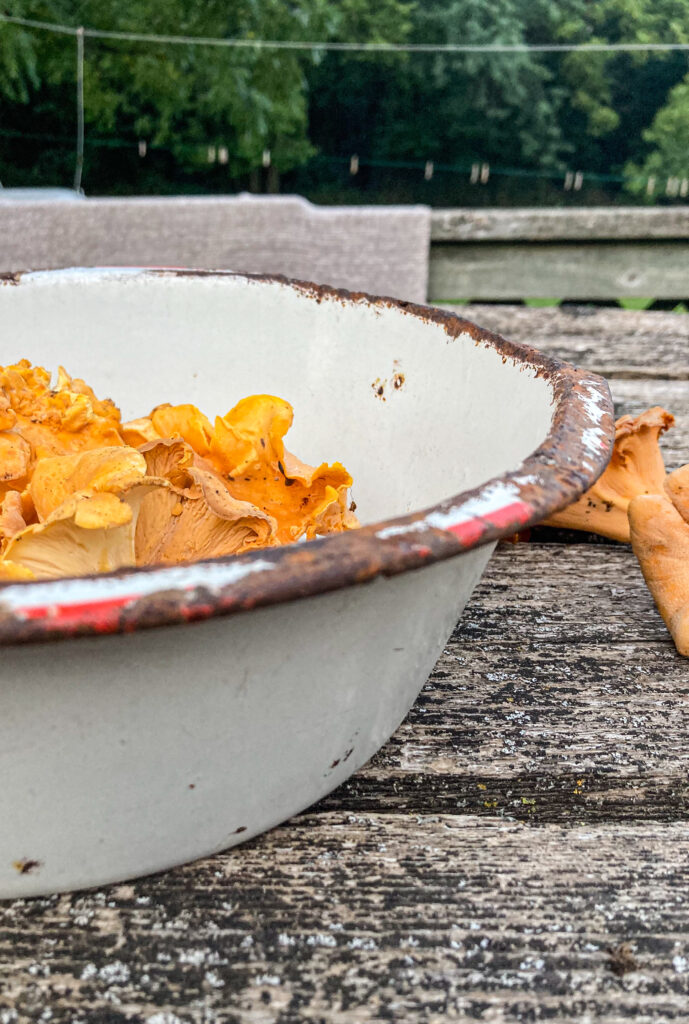
A Vitamin Rich Mushroom
Chanterelle mushrooms can help with vitamin deficiencies or just be a good source of vitamins without having to supplement. Its a great way to get vitamins into your children’s diet as well. Especially because they have such a wonderful, subtle taste. They taste fruity, nutty like almonds, and a little peppery. They have sort of a sweet smell, similar to the smell of apricots, which comes out in the taste a bit.
Here is a list of just some of the vitamins packed into these wild mushrooms:
- Fatty acids
- 15 Different amino acids
- Vitamins D, A, E, C, and B6
- Thiamine
- Riboflavin
- Potassium
- Selenium
- Manganese
- Copper
- Iron
- Phosphorus
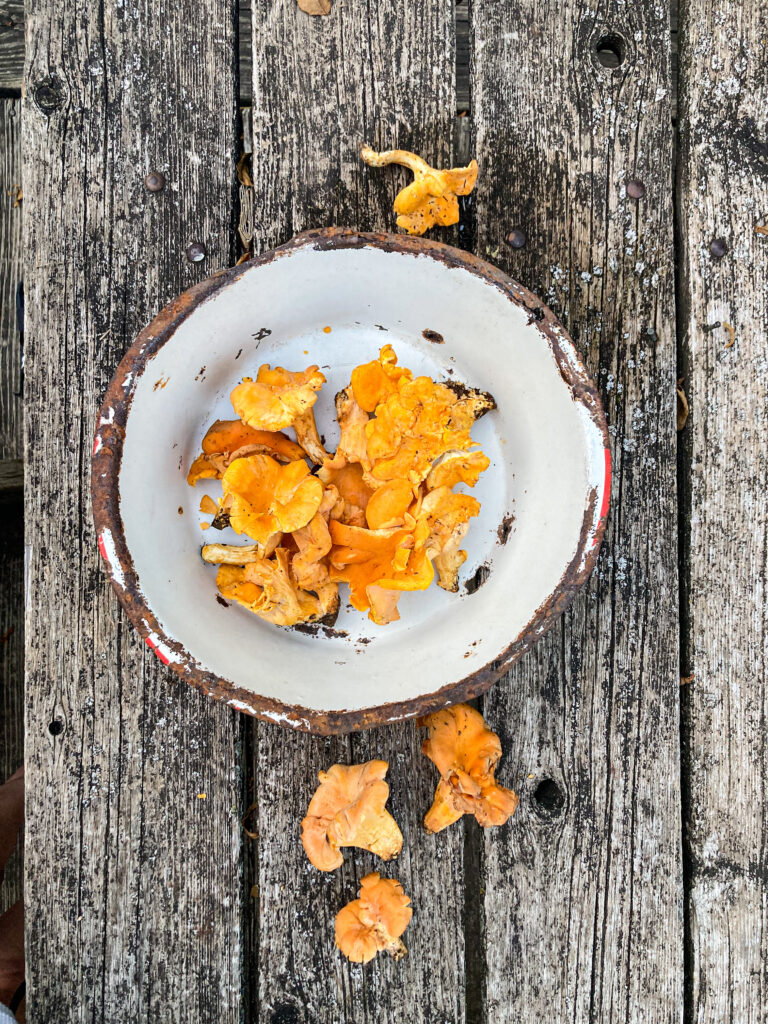
How to Identify a Chanterelle Mushroom
Its very important to have a good idea of the characteristics of any mushroom before eating it. When it comes to the chanterelles, you don’t want to mistake it for the jack-o-lantern mushroom, especially if you plan to cook these for your family. Eating a jack o’ lantern mushroom will cause poisoning symptoms.
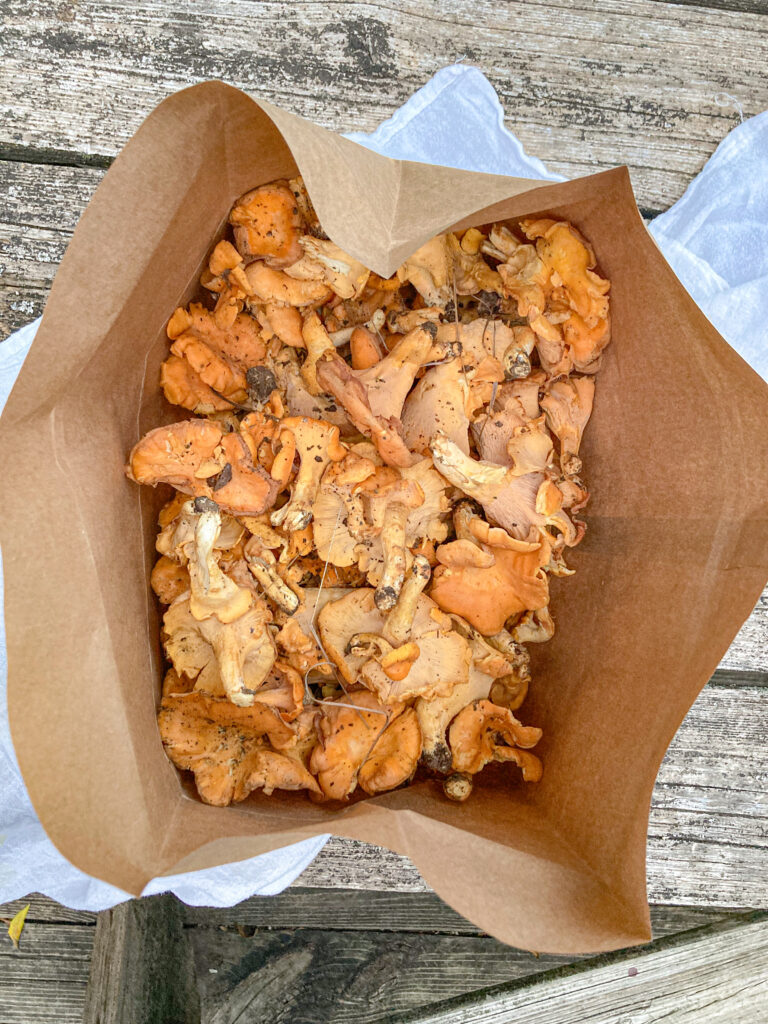
Color of Chanterelle Mushrooms
Although this is about the golden variety, you can also find a red and a white colored chanterelle. Golden chanterelles are actually more of a bright orange or yellow color. They usually are pretty much one solid color all over, but they can have some spots and fading. They can also be lighter colored on the underneath of the cap.
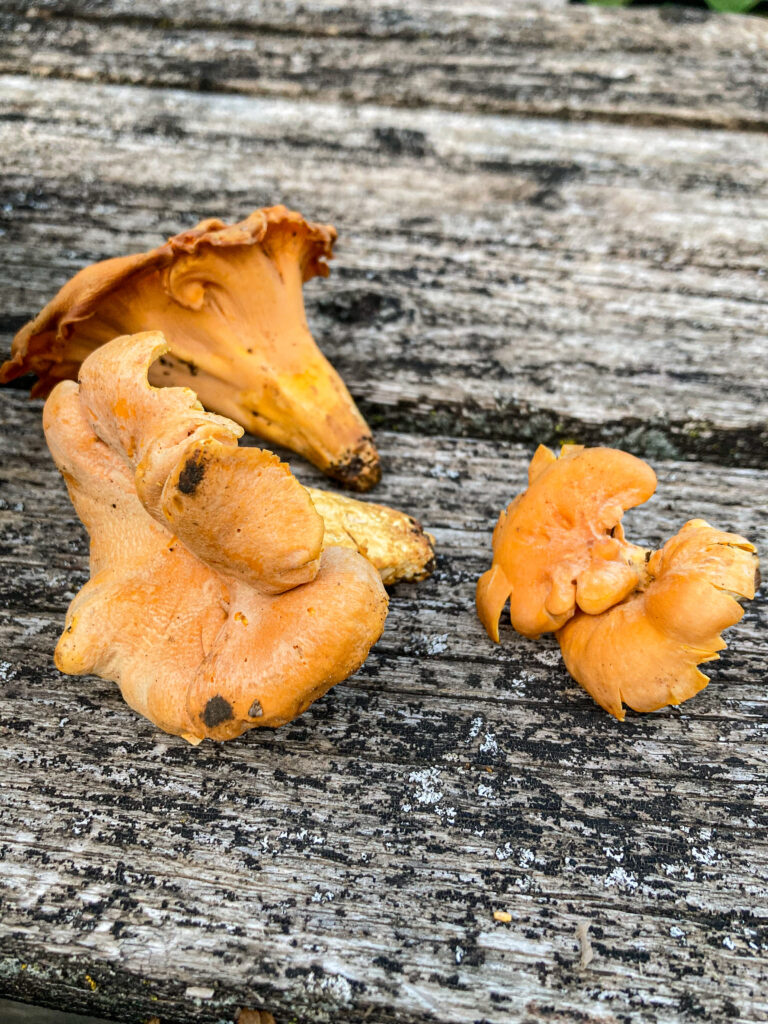
Shape and Size of a Chanterelle
They will grow to about 2 to 5 inches in diameter. They will usually be as wide as they are tall. And they have a funnel or trumpet shape. This is a pretty obvious characteristic, because the mushroom top in inverted compared to a typical mushroom.
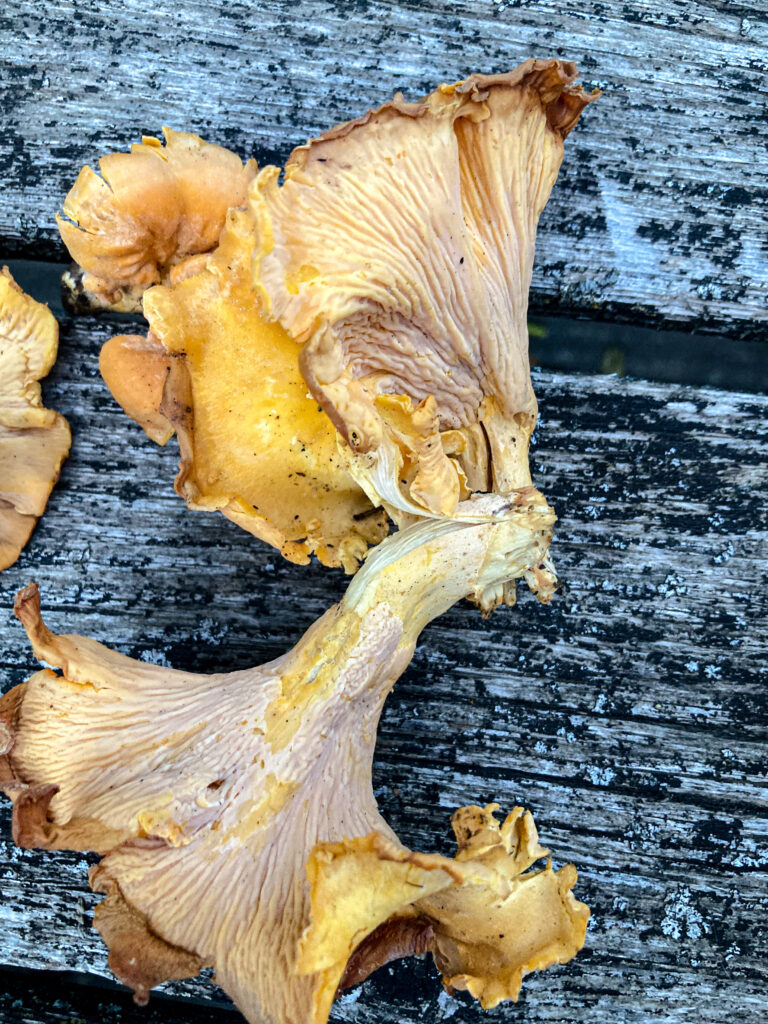
Characteristics of Chanterelle Mushrooms
These mushrooms have a solid stem. The thing you want to pay the most attention to are the gills on the underneath side of the mushroom top. They are actually false gills, meaning they are not actually gills- they are just wrinkles. They look similar to veins. False gills won’t move when you touch them with your finger. Look for the sweet apricot smell that will be easy to notice coming from each chanterelle mushroom you pick.
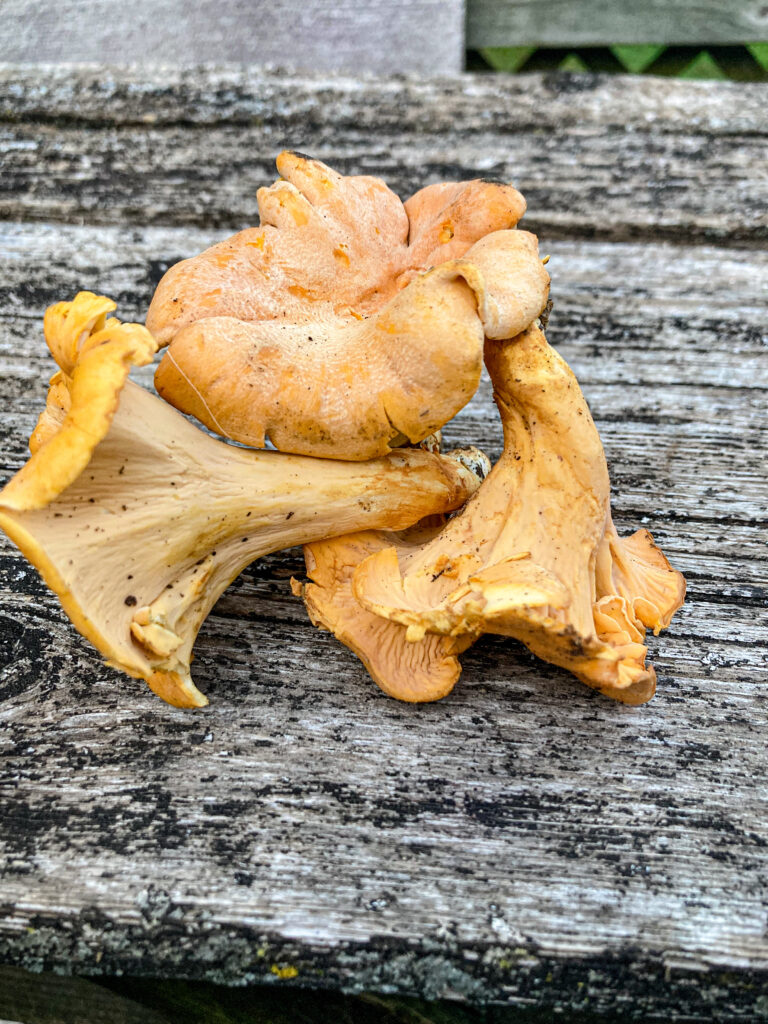
Where Chanterelle Mushrooms Grow
Chanterelles start popping up in May and can be found all the way through October. You should look for them on a warm day after a good rain. They’re likely to be in short grass or leaf litter. I typically find them in the shade under the trees. And where there is one, there usually will be more around. But you will not find them growing out of wood like fallen decaying limbs, roots, or stumps. They will be growing directly out of the ground, and they will be growing singularly or in very small groups. You will not find them in large clusters all attached to one another.
Identifying a Chanterelle a Look-alike, The Jack O’ Lantern Mushroom
The jack o’ lantern mushroom is different from the chanterelle in a few ways, but the differences aren’t always obvious right away. So it is very important that you pay close attention to each mushroom you plan to eat. You want to be sure you are confident in your identification, because eating a jack o’ lantern mushroom can cause some pretty severe poisoning symptoms like sweating, vomiting, diarrhea, and abdominal pain. It will last about three days, and it will be a very miserable three days.
Color of Jack O’ Lantern Mushrooms
Jack o’ lantern mushrooms are more of a pumpkin color, although very similar to the chanterelle’s orange/yellow color. They can be slightly darker around the stem and even darker toward the base of the stem. These mushrooms actually glow in the dark to attract insects when they are sporing. They glow bright green, and you can see it yourself by harvesting an adult mushroom that is ready to sporulate. You can identify if the mushroom is beginning to sporulate by the light colored center of the mushroom top.
Shape and Size of a Jack O’ Lantern Mushroom
Jack o’ lantern mushrooms do not have a funnel shape, but this isn’t a totally black and white difference. Sometimes they have a dip in the center of the top of the mushroom cap, giving a funnel appearance. But if you look at the edges of the mushroom cap, you will see the downward curve. They can also quit a bit bigger than the chanterelles. Sometimes they can be 2 to 3 times bigger.
Characteristics of Jack O’ Lantern Mushrooms
They have a thick fleshy stem similar to the chanterelle, but it typically is more curved. Different from the chanterelle, they have very obvious gills and not wrinkles underneath the cap. True gills are flap like so they will move with your finger as you touch it. They’re layered very close to each other with definable space between each.
Where Jack O’ Lantern Mushrooms Grow
Jack o’ lantern mushrooms only grow on wood. They can be found in the same areas as chanterelles, but they will be attached to some kind of decaying wood, stumps, roots or the base of a tree. And when you find a jack o’ lantern mushroom, it will be clumped with other jack o’ lanterns. These mushrooms do not grow singularly for the most part, they will almost always be in large clusters all grown together. You can even pick these clusters up just like that because they are all attached at the stem.
Collecting Chanterelle Mushrooms
When you find a chanterelle mushroom, you don’t want to just pull it out of the ground. This is because you will take the root system with it, damaging it from being able to produce again. What you should do instead is bring a pair a scissors to cut the stem at the base, or grab the stem with your fingers and bend it to break it. I have found that it is best to get as much dirt off as you can immediately after picking. The longer the dirt sits on there, the harder it is to get off. And having dirt left on your mushrooms will give it a gritty texture.
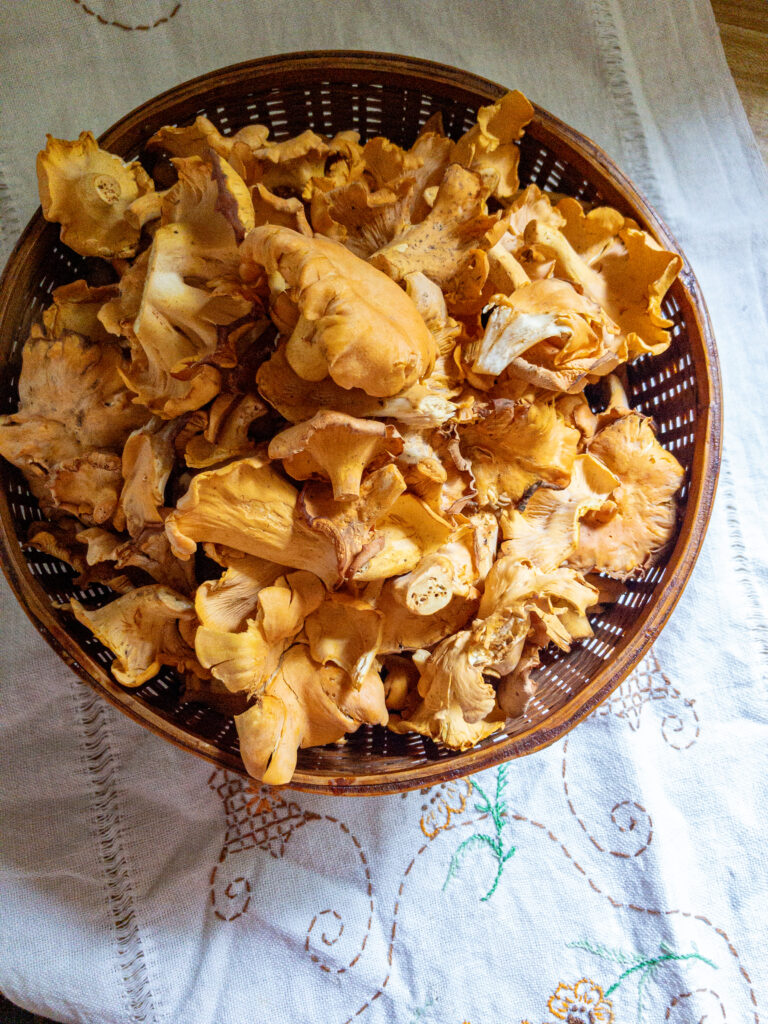
The Best Way to Store Chanterelle Mushrooms
Just like you should with any mushroom, you want to use a mesh bag or a loosely woven basket when picking. This way, any spores that are released won’t end up trapped in your bag. When you get back to the house, you will want to get off any dirt left using a rag or soft brush. You don’t want to wash the mushrooms, because they won’t be preserved as long if you do. You want them to be dry before storing, so make sure they air out if they’re wet from a recent rain. Storing the mushrooms in a paper sack is the best way to preserve them. Just fold over the top and add a clip to seal. They will store for up to 10 days, or until they become soggy, slimy and have a different smell.
